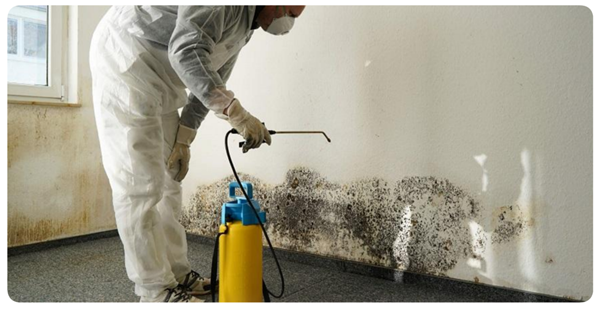An In-Depth Look into the SiO2 (Precipitated Silica) Production Process
Precipitated silica (SiO2) is a vital industrial material used in a wide range of applications, from rubber and plastics to food additives and cosmetics. Its unique properties, including high surface area, porosity, and purity, make it an essential component in many products. This blog will delve into the production process of precipitated silica, exploring the manufacturing techniques, raw material costs, and recent developments in the industry.
Manufacturing Report and Process
The production of precipitated silica involves several key steps, beginning with the selection of raw materials and culminating in the final product. The primary raw materials used in the production process are sodium silicate and sulfuric acid. Here’s a detailed look at each stage of the manufacturing process:
Request For Sample: https://www.procurementresource.com/production-cost-report-store/precipitated-silica/request-sample
-
Preparation of Sodium Silicate Solution: Sodium silicate, also known as water glass, is prepared by dissolving silica sand in sodium hydroxide at high temperatures. The resulting solution is a viscous, alkaline liquid that serves as the precursor for precipitated silica.
-
Reaction with Sulfuric Acid: The sodium silicate solution is then reacted with sulfuric acid in a controlled environment. The reaction is highly exothermic, producing a gel-like precipitate of silica.
-
Precipitation: The reaction mixture is carefully monitored to ensure the correct conditions for the precipitation of silica. Parameters such as temperature, pH, and reaction time are controlled to obtain the desired particle size and surface area of the precipitated silica.
-
Filtration and Washing: The precipitated silica is separated from the reaction mixture through filtration. The filter cake is then washed multiple times to remove impurities and by-products such as sodium sulfate.
-
Drying: The washed silica is dried using various methods, including spray drying, rotary drying, or flash drying. The drying process is critical to achieving the desired moisture content and physical properties of the final product.
-
Milling and Classification: The dried silica is milled to achieve the required particle size distribution. The product may also be classified to remove oversized particles and ensure uniformity.
-
Packaging and Storage: The final product is packaged in suitable containers to protect it from moisture and contamination. It is then stored under controlled conditions until it is ready for shipment.
Raw Material Costs
The cost of raw materials is a significant factor in the production of precipitated silica. The primary raw materials, sodium silicate and sulfuric acid, are widely available and relatively inexpensive. However, their prices can fluctuate based on market demand, supply chain disruptions, and geopolitical factors.
-
Sodium Silicate: The cost of sodium silicate is influenced by the price of silica sand and sodium hydroxide. The availability of high-purity silica sand can impact the overall cost of production. Additionally, energy costs for melting and dissolving the silica sand contribute to the final price of sodium silicate.
-
Sulfuric Acid: Sulfuric acid is produced from sulfur, which can be sourced from petroleum refining or mining operations. The price of sulfuric acid is affected by the availability of sulfur and the cost of production, including energy and transportation expenses.
-
Energy Costs: The production of precipitated silica is energy-intensive, requiring significant amounts of heat and electricity. Fluctuations in energy prices can have a direct impact on the overall cost of production.
-
Labor and Overhead Costs: Skilled labor is required to operate the production equipment and maintain quality control. Additionally, overhead costs such as maintenance, utilities, and environmental compliance contribute to the total production cost.
Latest News
The precipitated silica industry is continuously evolving, with advancements in technology and changes in market dynamics. Here are some of the latest developments and news in the industry:
-
Technological Innovations: Recent advancements in production technology have led to more efficient processes and higher-quality products. Innovations such as automated control systems, improved filtration techniques, and advanced drying methods have enhanced the overall efficiency and consistency of precipitated silica production.
-
Sustainability Initiatives: The industry is increasingly focused on sustainability and environmental responsibility. Efforts are being made to reduce the carbon footprint of production processes, minimize waste, and optimize the use of raw materials. Some manufacturers are exploring the use of renewable energy sources and implementing recycling programs for by-products.
-
Market Expansion: The demand for precipitated silica is growing across various industries, including automotive, electronics, and healthcare. Emerging markets in Asia-Pacific and Latin America are witnessing increased consumption of precipitated silica, driven by industrialization and urbanization.
-
Regulatory Changes: Regulatory frameworks governing the production and use of precipitated silica are evolving. Stricter environmental regulations and safety standards are being implemented to ensure the protection of workers and the environment. Manufacturers are adapting to these changes by investing in compliance measures and adopting best practices.
-
Mergers and Acquisitions: The precipitated silica market is witnessing consolidation, with major players acquiring smaller companies to expand their market presence and product portfolio. These mergers and acquisitions are aimed at achieving economies of scale, enhancing research and development capabilities, and accessing new customer segments.
In conclusion, the production of precipitated silica is a complex and dynamic process that requires careful control of various parameters. The cost of raw materials, energy, and labor play a significant role in determining the overall cost of production. Technological innovations and sustainability initiatives are driving the industry forward, while market expansion and regulatory changes are shaping its future. Staying informed about the latest developments in the precipitated silica industry is essential for manufacturers and stakeholders to remain competitive and capitalize on emerging opportunities.



